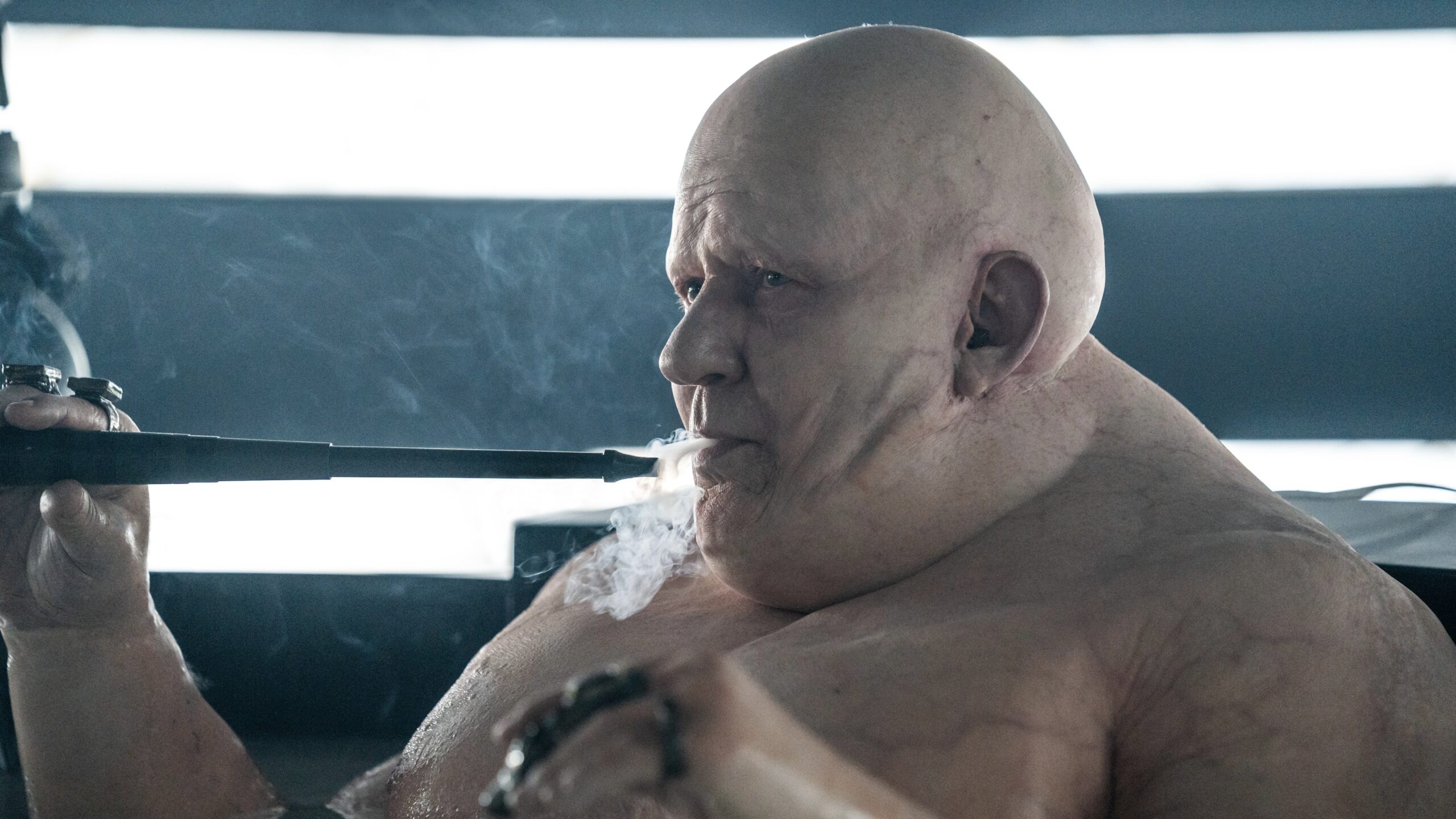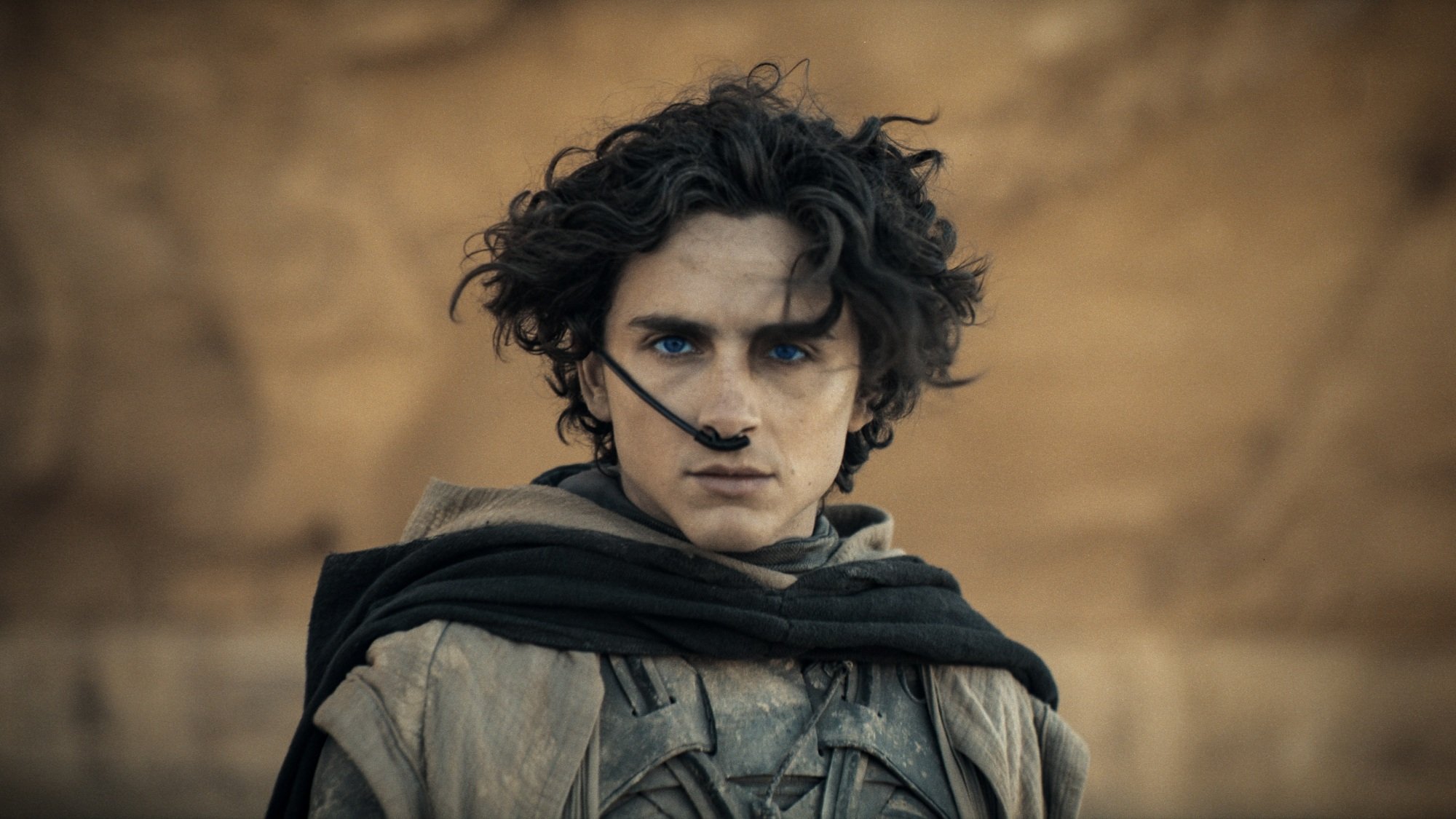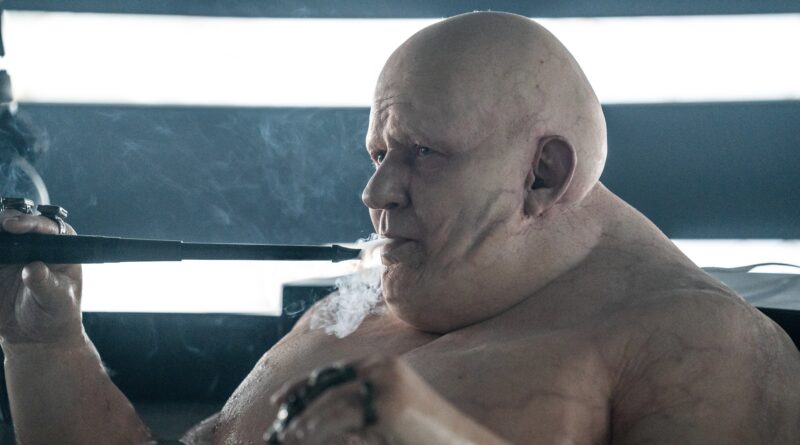‘Dune: Part Two’: What does Paul tell Baron Harkonnen?

One of the biggest changes Dune: Part Two makes from Frank Herbert’s original Dune is the fate of Baron Harkonnen (Stellan Skarsgård).
In both versions of the story, the Baron perishes by the hand of a member of the Atreides family. In Herbert’s Dune, that honor falls to Alia Atreides, Paul’s two-year-old sister who has all the skills and abilities of a Bene Gesserit Reverend Mother. But given that she isn’t even born yet in Dune: Part Two — the adult version of Alia is played by Anya Taylor-Joy, though! — Paul (Timothée Chalamet) winds up killing the Baron instead.
The murder occurs at the end of the film, after Paul and his Fremen troops have cornered Emperor Shaddam Corrino IV (Christopher Walken) and the Harkonnens on Arrakis. By this point, the Baron has been cut loose from his medical machinery and is crawling up the stairs to the Emperor’s throne. Paul storms in and greets the Baron as his grandfather (a revelation he learned after drinking the Water of Life) before stabbing him in the neck with a Fremen Crysknife.
As he kills the Baron, he tells him, “You die like an animal.” It’s a brutal, dehumanizing statement. But there’s more to it than just plain insult.
Paul’s last words to the Baron link back to the Gom Jabbar.

A large element of the world of Dune is the Gom Jabbar, a poisoned needle the Bene Gesserit use to test a subject’s humanity. In the first Dune, the Reverend Mother Gaius Helen Mohiam (Charlotte Rampling) administers the test on Paul. In Dune: Part Two, Lady Margot Fenring (Léa Seydoux) administers it on Feyd-Rautha Harkonnen (Austin Butler).
During the test, a Bene Gesserit holds the Gom Jabbar to the neck of the subject, who places their hand in a box that inflicts immense pain on them. If they are able to control their impulses and keep their hand in the box, they will live, having proven their willpower and humanity. But if they act on instinct and withdraw their hand because of the pain, they will die at the tip of the Gom Jabbar. For the Bene Gesserit, anyone unable to control their impulses is an animal — and also harder to control. That’s why they put possible Kwisatz Haderachs like Paul and Feyd through the test: an animal should not have that kind of power.
That brings us to Paul and the Baron. In calling the Baron “an animal,” Paul is insinuating that the Baron is more instinct-driven than intelligent. There’s also a more literal level to the line: Paul stabs the Baron in the neck, right where a Gom Jabbar would hit.
But wait, there’s more! Paul’s line also alludes to the Baron’s death in the book. When Alia kills the Baron in Herbert’s Dune, she pricks him with the Gom Jabbar, meaning he dies exactly like any “animal” who failed the Bene Gesserit’s test of humanity.
While I still think we were robbed of seeing a two-year-old murder the Baron in Dune: Part Two, Paul’s line still makes for a solid nod to the Gom Jabbar, and to Alia’s use of it in Dune. To twist a phrase from Herbert, we’re getting meanings within meanings within meanings.
